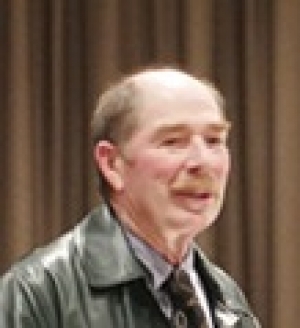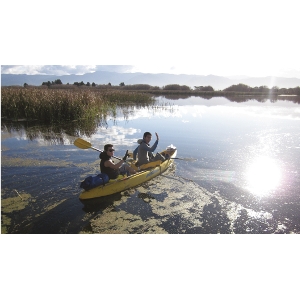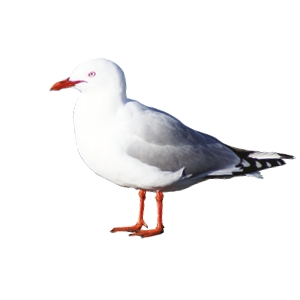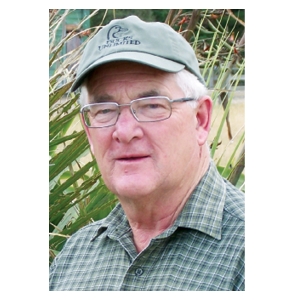Super User
Welcome to new board members
From the President
The 2018 AGM in Hamilton is over for the year and a great success it was, with about 50 people attending the Saturday night dinner and auction. Just under $5000 was raised thanks to the persistence of auctioneer Dan Steele.
I am delighted to welcome two new members onto the Board with Adrienne Longuet-Bushell and Liz Brook allowing their names to be put forward. Liz has retired from her role as editor for Flight magazine but still felt she wanted to contribute to the organisation, so thank you to both of them.
Our new editor is Alison Murray and she is keen to hear from any members with material for the magazine – her email address is below.
As we have not been receiving the same level of inquiry as previously for funds for the construction of wetlands, the Board is looking into providing ongoing scholarship funding for university students working in the environment and wetland fields, so watch this space.

Hydrological and chemical characteristics of Matthews Lagoon and Boggy Pond, Wairarapa
Essential information for the decision making process of wetland restoration.
Wetlands are areas where lands transition to water bodies. Because of this special geomorphological setting, wetlands play important roles in flood control, nutrient retention, and water storage. In New Zealand, less than 10 percent of the original wetlands have survived since human settlement. Many of the remaining wetlands are still under threat from water quality degradation, invasive species, and changes in hydrological regime.
Wetland restoration is the process of bringing the structure and function of a wetland back to its original state. Although specific objectives may vary between projects, three major objectives of wetland restoration are restoration of wetland function, restoration of wetland structure, and restoration of traditional landscape and land-use practices. In order to ensure the success of a wetland restoration project, a good understanding of the hydrological process in the wetland is the first step.
Boggy Pond and Matthews Lagoon on the eastern edge of Lake Wairarapa in the Wellington Region were formed as a result of the deposition of sand dunes on the eastern shore and changes in river courses between floods. They were modified by a series of engineering works under the lower Wairarapa valley development scheme in the 1980s.
Boggy Pond is cut off from Lake Wairarapa and surrounding wetlands by a road and stopbank, leaving a more stable water level compared to its original state. To analyse the water and nutrient balance in these two wetlands, factors such as surface flows, surface water levels, groundwater levels, rainfall, climate data, and water quality were assessed at various monitoring stations in this study. It is believed that Matthews Lagoon and Boggy Pond have completely different water regimes. Matthews Lagoon receives surface inflow from the Te Hopai drainage scheme and discharges to Oporua floodway, but Boggy Pond only has rainfall as the water input.
The results from the water balance analysis seem to support this assumption. An unexpected finding in Matthews Lagoon suggests that water might bypass the main wetland, creating a shortcut between the inlet and outlet. As a result, the nutrient removal ability was considerably weakened by this bypass because of the short water retention time.
In Boggy Pond, there may be an unknown water input which could adversely affect the
Some recommendations are given on the restoration of these two wetlands. First, set proper objectives according to their different functions. Second, enhance the nutrient removal ability of Matthews Lagoon by harvesting plants, removing old sediments, and creating a more evenly distributed flow across the wetland throughout the year. Third, restore the natural water level fluctuations and improve water quality in Boggy Pond by identifying any unknown water inputs first.
To view Cheng Shi’s full thesis go to:http://researcharchive.vuw.ac.nz/
Wairio under scrutiny
Ecological restoration of Wairio Wetland, Lake Wairarapa
The response of native wetland vegetation to eutrophication and re-vegitation management strategies.
Wetlands are highly productive ecosystems that support abundant native fauna and flora and provide many essential functions and services, for example, water purification, erosion stabilisation, floodwater storage, groundwater recharge, peat accumulation and biogeochemical cycling.
Wetland disturbance can cause altered hydrological regimes, invasive species introduction, soil and water eutrophication, habitat fragmentation and reductions in native fauna and flora leading to an overall reduced functionality.
Wairio Wetland on the eastern shores of Lake Wairarapa forms a part of Wairarapa-Moana, the largest wetland complex in the lower North Island. Historically Wairio was an abundant kahikatea swamp forest, with a diverse range of waterfowl, waders and freshwater fish. However, the wetland was adversely affected by a draining scheme during the 1960s and 1970s, the construction of Parera Road, and the invasion of willow trees planted for erosion control.
Draining of the wetland, division from nearby lagoons and ponds, nitrogen and phosphorus build-up in waterways and exotic weed invasion all contributed to the poor state of the wetland. In 2005, Ducks Unlimited (DU) in conjunction with the Department of Conservation (DOC) and members of the local community formed the Wairio Wetland
Restoration Committee to manage and restore the wetland to its presettlement state.
This thesis reports on two studies undertaken at Wairio Wetland with aims to inform future restoration efforts.
The short duration of the experiment and summer drought conditions may have obscured the above-ground visual responses of the plant community to nutrient addition: therefore, further continuation of this experiment is advised. Variable survival rates of previous plantings, and uncertainty about the most cost-effective practice under current site conditions, provided the impetus for this study.
Therefore the second study, conducted between July 2011 and January 2014 in Stage 3 of the wetland, further investigates the effects of various management treatments on establishment of native woody vegetation.
Note: Both the experiments described in the above thesis are on-going. Stephen Hartley who is Deputy Director for the Victoria University Centre for Biodiversity and Restoration Ecology and is a Senior Lecturer in Conservation and Ecology, will continue to monitor the growth of trees in Stage 3, and a Belgian intern student will re-survey the nutrient enrichment plots in Stage 2.
To view Aprille Gillon’s full thesis go to:-
http://researcharchive.vuw.ac
Results showed that interspecific competition and hydrology appeared to be the main processes influencing the establishment of native plantings at Wairio Wetland, with plant mortality greatest in the first year after planting. Water logging, in particular, was detrimental to establishment of all species at the site except D. dacridioides. Topsoil excavation and the planting of nurse trees at 1.5m spacing was the most effective management treatment combination promoting survival of plantings at Wairio.
However, the success of management treatments varied greatly between species at the site and had different impacts on plant growth. Topsoil excavation was beneficial to survival of D. dacridioides and C. robusta but detrimental to growth of C. australis, O. virgata, C. propinqua, Ptenuifolium and L. scoparium.
The concurrent planting of nurse trees with focal trees was beneficial to the survival of D. dacridioides, growth of P. totara, and survival and growth of C. australis. The planting of nurse trees further apart at 1.5m compared to 0.75m had a positive effect on the survival of C. propinqua and P. tenuifolium, and survival and growth of L. scoparium. Weed mats were beneficial to survival of O. virgata and growth of L. scoparium but detrimental to growth of D. dacridioides. These management treatments can be used in future revegetation efforts at Wairio Wetland and potentially in other wetland restoration projects throughout New Zealand.
‘Ghost’ whio returns to Whakapapanui Stream
Nicknamed the ghost whio due to its very pale light blue grey colouring the duck was part of a clutch that hatched on the stream close to Whakapapa Village two years ago.
However, Hastings resident Adam Clarke was excited to report the sighting and to get photographs of the unique ghost blue duck while in the area during school holidays whio spotting.
“I was excited when I spotted the duck just below the Whakapapanui Stream bridge. I had already spent a couple of days looking in the Turangi and Tongariro area and after an afternoon scouring streams around Whakapapa Village without any luck I was happy to finally see a pair by the Major Jones Bridge in Turangi,” said Adam.
Tongariro Senior Ranger Alison Beath said staff were also excited to hear the ghost whio was back in the area.
“This duck hatched below the Whakapapa Intake a couple of seasons ago, and we’ve had sporadic reports of him from the lower Whakapapanui Stream. It’s great he’s shown up again, as we weren’t sure if he had survived or not,” said Alison.
“His light colouring obviously hasn’t been a disadvantage yet - in fact he seems to be quite well camouflaged when he is in the white water.”
It appears the whio season started early with the first ducklings reported hatched in the Tongariro Forest site earlier in October and in other areas at the start of the month.
Genesis Energy and the Department of Conservation have partnered together in a five year programme to secure the future of this unique vulnerable native bird. Operating under the name of Whio Forever this partnership is fast tracking implementation of the national Whio Recovery Plan to protect whio and increase public awareness.
The support of Genesis Energy is enabling DOC to double the number of fully secure whio breeding sites throughout the country, boost pest control efforts and enhance productivity and survival for these rare native ducks.
Stephen Moorhouse and
Robyn Orchard
Dan (the Blue Duck man) Steele
Ducks Unlimited director Dan Steele, is one of this year’s five Nuffield New Zealand Scholarship winners.
- Bede O’Connor, a West Coast dairy farmer.
- Ben Allomes, Woodville dairy farmer.
- Satwant Singh who is part of the Fonterra Commodity Risk and Trading team and also works on her family dairy farm near Morrinsville.
- And finally Sharon Morrell a regional leader with Dairy NZ based in Rotorua.
Takahē take to new home
Northern Regional Parks, Auckland Council.
Co-patron Diane Pritt interview
Co-patron Diane Pritt interview
Country Life, National Radio
Radio New Zealand’s Country Life presenter Susan Murray took the time to travel to Ohakune and meet Ducks Unlimited Co-Patron Diane Pritt at her home farm Mitredale.
So if any of you are listeners to National Radio’s Country Life programme on Friday nights or Saturday mornings, you might be lucky enough to catch that interview.
Susan was not able to give us an exact date that it would be on air, but it will be early this year.
Keep your ears tuned.
Birds in peril World Over
Bird species the world over are victims of human activities and thoughtlessness. Who would have thought our local New Zealand sea birds (red beaked gulls in particular), could ever reach a point when their numbers would dwindle and the possibility of their extinction could be just a matter of years away?
In Britain too, there is a dramatic decline in farmland birds – a decline of 55 percent since 1970. And humans are the cause. There are more and more of us and therefore, more and more land is required to grow our food.
Water and wetland birds in Britain have fallen by 12 percent in five years, seabirds have declined by nine percent and although woodland birds seem to have remained stable in recent years, they are down by 28 percent since 1975.
From the President
Well, spring has passed with good numbers of ducklings observed on local wetlands in Central Hawke’s Bay. The problem now is, will the weather gods give us enough rain to top the wetlands up before a projected dry summer? Fingers crossed.
DU NZ has supported a number of wetland enhancement projects over many years but we have also been sponsoring a number of students carrying out research on wetlands and birds. This issue of Flight features updates on research being carried out by students from Victoria University on Wairio wetland and a student from Massey University working on bittern at Lake Whatuma. I look forward to reading their reports. (see pages 6-7 and pages 10-11).
The DU Directors are meeting later this month and the location for our 2015 annual conference will be confirmed.
I trust you all had an enjoyable Christmas and New Year.
John Cheyne






